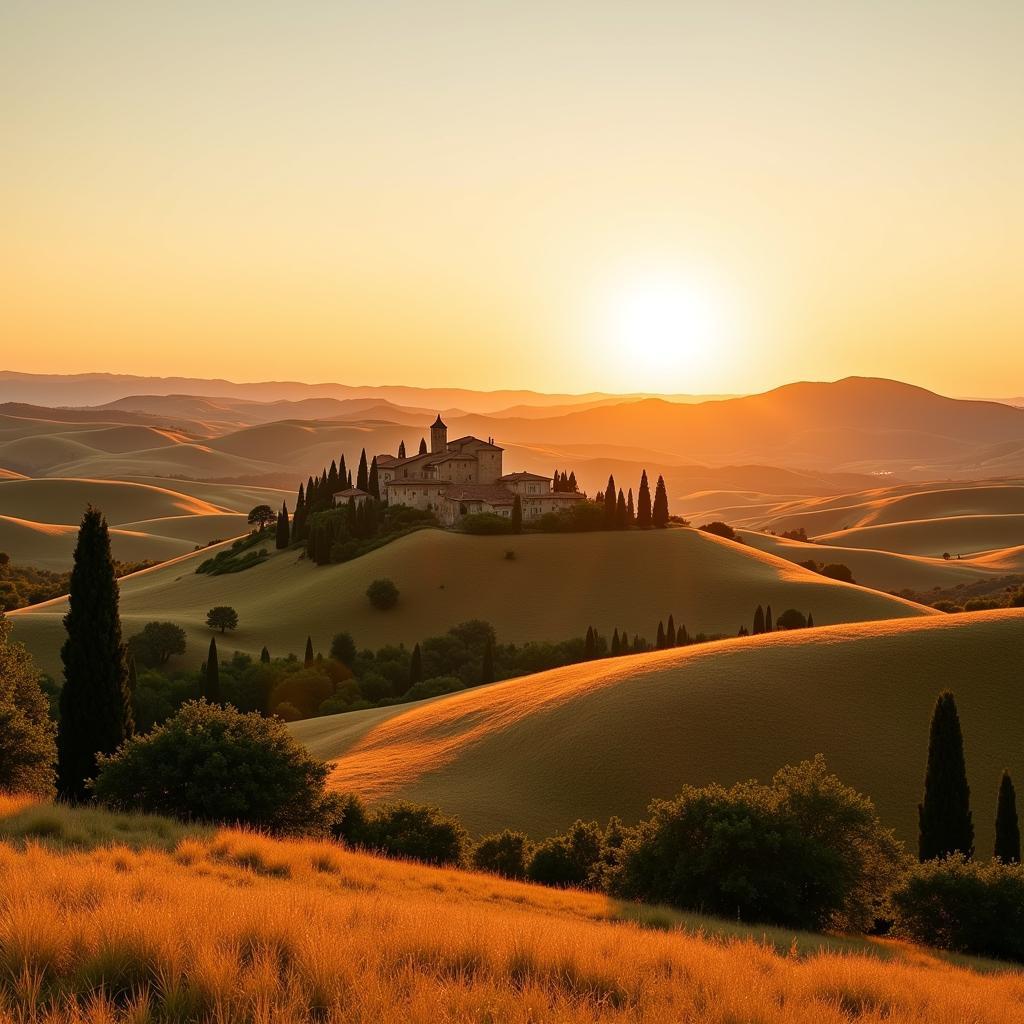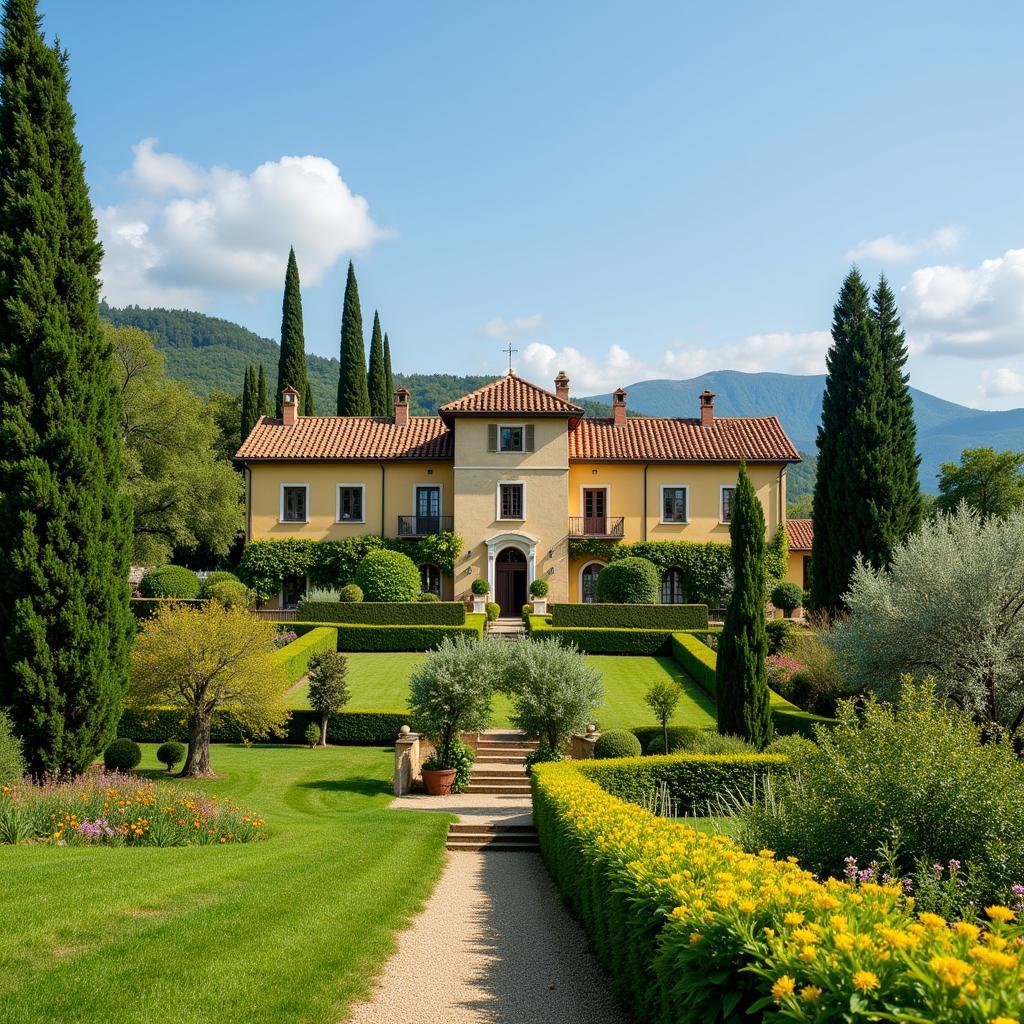What color is Tuscany? Imagine rolling hills bathed in golden sunlight, rustic farmhouses nestled amongst vineyards, and fields of sunflowers stretching towards the horizon. These iconic images evoke the warm, earthy color palette that is synonymous with the Tuscan region of Italy. But defining “Tuscan color” isn’t as simple as picking a single shade. It’s about capturing the essence of the landscape, the architecture, and the very spirit of this captivating region. Let’s delve into the rich tapestry of colors that make up the Tuscan aesthetic.
The Core Colors of Tuscany
The heart of the Tuscan color palette lies in its earthy tones. Think warm, sun-baked hues like terracotta, ochre, and sienna. These colors are inspired by the region’s clay-rich soil and reflect the natural beauty of the landscape. They create a sense of warmth, history, and connection to the land. These core colors form the foundation upon which other shades are layered, creating a harmonious and inviting atmosphere.
 Tuscan Landscape Earth Tones
Tuscan Landscape Earth Tones
Ochre: The Golden Glow
Ochre, a yellow-orange pigment derived from iron oxide, is a prominent color in the Tuscan landscape. From the facades of ancient buildings to the sun-drenched fields, ochre represents the warmth and vitality of the region. Its golden glow adds a touch of elegance and timelessness to any space.
Terracotta: A Touch of Rustic Charm
Terracotta, a reddish-brown clay-based hue, is another defining color of Tuscany. Used in roofing tiles, flooring, and pottery, terracotta brings a sense of rustic charm and authenticity to the Tuscan aesthetic. It’s a color that speaks of tradition and craftsmanship, connecting us to the rich history of the region. You might be interested in learning how to make burnt sienna color, a similar earthy hue.
Sienna: Depth and Richness
Sienna, a brownish-orange pigment, adds depth and richness to the Tuscan color palette. It’s a more muted tone compared to ochre, providing a grounding element to the overall aesthetic. Learn more about what is the color of sienna.
Beyond the Basics: Expanding the Tuscan Palette
While the earthy tones form the core of the Tuscan color palette, other shades contribute to the region’s unique aesthetic. These include:
- Olive Green: Representing the lush olive groves that dot the landscape.
- Cypress Green: The dark, elegant green of the iconic cypress trees.
- Sunflower Yellow: The vibrant yellow of the sunflowers that bloom in abundance.
- Sky Blue: The clear, bright blue of the Tuscan sky.
- Lavender: The soft purple of the lavender fields that scent the air.
 Tuscan Villa Expanded Palette
Tuscan Villa Expanded Palette
These colors, when combined with the core earth tones, create a balanced and harmonious palette that evokes the natural beauty and tranquility of the Tuscan countryside.
“The beauty of the Tuscan palette lies in its simplicity and harmony. It’s about using natural, earthy colors to create a space that feels warm, inviting, and connected to the land.” – Isabella Rossi, Color Specialist at Color Box Hanoi
Creating a Tuscan-Inspired Space
Bringing the Tuscan aesthetic into your home is about more than just choosing the right paint colors. It’s about creating a feeling, an atmosphere. Consider incorporating natural materials like wood, stone, and wrought iron. Use textures like linen and terracotta to add depth and warmth. And don’t forget the details – rustic pottery, wrought iron candle holders, and fresh flowers can all contribute to the Tuscan charm.
“When designing a Tuscan-inspired space, think about the natural elements of the region. Bring in the warmth of the sun, the texture of the earth, and the vibrancy of the landscape.” – Marco Bianchi, Interior Designer at Color Box Hanoi
Conclusion: Embracing the Tuscan Spirit
What color is Tuscany? It’s a question with a multifaceted answer. It’s about the interplay of warm earth tones, the vibrant accents of nature, and the rustic charm of the region’s architecture. By understanding the nuances of this color palette, you can create a space that embodies the warmth, beauty, and timeless elegance of Tuscany.
FAQ
- What is the most common color in Tuscany? Earthy tones like terracotta, ochre, and sienna are the most prevalent.
- How can I incorporate Tuscan colors into my home? Use warm earth tones for walls, furniture, and accessories. Accent with olive green, cypress green, and sunflower yellow.
- What materials complement the Tuscan color palette? Natural materials like wood, stone, wrought iron, and linen work beautifully with Tuscan colors.
- What is the difference between ochre and sienna? Ochre is a yellow-orange pigment, while sienna is a brownish-orange pigment.
- How can I create a Tuscan-inspired garden? Plant olive trees, cypress trees, lavender, and sunflowers. Use terracotta pots and stone pathways.
Other Questions You Might Have
- How can I choose the right Tuscan color for my home?
- What are some popular Tuscan decorating styles?
Need Help Creating Your Dream Tuscan Space?
Contact us at Color Box Hanoi! Phone: 0373298888, Email: [email protected]. Visit our showroom at 86 Cầu Giấy, Hanoi. We have a 24/7 customer service team.

